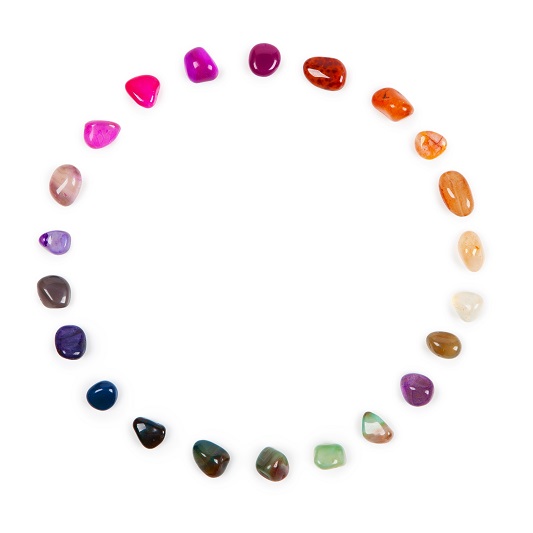The World’s Most Expensive Precious Metals

Guide to Men’s Jewellery
13th June 2019
The Most Famous Men’s Watches
27th June 2019A precious metal is a rare, naturally occurring metallic chemical element. As they are rare, each precious metal boasts high economic value. Chemically, precious metals are often less reactive than the other elements. They are often ductile and have a high lustre. Years ago, precious metals were used as currency; however, they are now regarded mainly as industrial materials and investment.
Some of the best-known precious metals are those used for coinage. While both gold and silver have industrial uses, they are better known for their uses in jewellery, art, and of course, coinage. The price of precious metals depends solely on their demand. As well as being driven by their practical use, demand is driven by their role as investments and a store of value. In this article, we explore some of the world’s most expensive precious metals in more detail.
Rhodium
Silver coloured and incredibly rare, rhodium is the most expensive metal in the world. Known for its high melting point and ability to withstand corrosion, the metal is commonly used in mirrors and jewellery. The material is also used as an alloying agent. Naturally occurring rhodium is found as a free metal in minerals such as rhodplumsite and bowiete. It is also found alloyed with similar metals and occasionally as a chemical compound.
Platinum
Platinum is best known for its malleable, dense, and non-corrosive properties. Due to its lustrous appearance and extreme resistance, the metal is widely used in jewellery. Often referred to as the “white silver metal”, platinum is the heaviest known precious metal and weighs almost twice as much as gold. The metal is also used in dentistry, aeronautics, and weaponry because of its durable nature and high resistance to wear and tear.
Ruthenium
Known for its extreme hardness and resistance, ruthenium is a rare transition metal that belongs to the platinum group. As the metal can withstand outside elements, such as chemicals, it is often used in the field of electronics. In modern times, the metal is used to effectively plate electrical contacts.
Ruthenium is normally found in ores in the Ural Mountains and in North and South America. While it’s often found with other platinum group metals, it’s sometimes found alone. The metal is also found in pyroxenite deposits in South Africa and in pentlandite extracted from Sudbury, Ontario.
Gold
The most recognisable of all precious metals, gold is famous for its conductivity, malleability, and unique colour. As well as being easy to spot, gold is considered the world’s most well-known metal. Its unique qualities make it ideal for use in electronics and high-end jewellery. The metals conductivity also makes it useful in thermal insulation.
Palladium
The next precious metal on the list is palladium. Discovered by William Hyde Wollaston in 1803, this chemical element has an atomic number 46 and a Pd symbol. After discovering the lustrous white metal, Hyde named it after the asteroid Pallas, named after the Greek goddess Athena’s epithet. Along with platinum, rhodium, ruthenium, iridium, and osmium, palladium makes up a group of elements called PGMs. While their chemical properties are similar, palladium is the least dense and has the lowest melting point.
Iridium
One of the most durable metals, iridium is the most extreme member of the PGMs. Boasting the highest melting point, it is the most corrosion resistant element and is often used in watches, jewellery, electronics, medicine, and the automotive industry. The largest producer of iridium is South Africa where the metal is processed from platinum ore and as a by-product of nickel mining.
Osmium
Another member of the platinum group, osmium is a bluish-white transition metal found in platinum ores as a trace element. Although the metal is brittle, it’s the densest natural element with a density of 22.59 g / cm3. Osmium is alloyed with other metals to make pen nibs, electrical contact, and other items that require extreme hardness and durability. Typically, the metal is mixed with other elements in the platinum group such as iridium and platinum itself.
Rhenium
Rhenium is a silvery-grey transition metal found in group 7 of the periodic table. The metal is one of the rarest elements in the Earth’s crust with an average concentration of 1 part per billion. With a melting point of 5903 K, rhenium has the highest melting point of any element and the second highest boiling point. The metal is obtained as a by-product of molybdenum and copper ores extraction and is chemically similar to technetium and manganese.
Germanium
Chemically similar to silicon and tin, germanium is a hard-brittle greyish-white metal in the carbon group. The chemical element has an atomic number 32 and a symbol Ge. In its purest form, germanium is a semiconductor with a silicon-like appearance. Like silicon, the metal reacts with oxygen in nature and forms complexes.
Beryllium
Beryllium is a rare chemical element with an atomic number 4. The lightweight alkaline metal is steel-grey in colour and fragile as a free element. Generally, the metal occurs as a spalling product of bigger atomic nuclei colliding with cosmic rays. While beryllium is present in the cores of stars, it’s depleted as it is fused and creates bigger elements. While the element is natural, it only occurs in combination with other mineral elements. For instance, it is contained in certain gemstones such as aquamarine, emerald and chrysoberyl.
Silver
Along with gold, silver is one of the most well-known precious metals. The soft, white transition metal boasts the highest thermal conductivity, electrical conductivity, and reflectivity of any metal. In the Earth’s crust, silver is not only found in its pure, free elemental form, but also as an alloy of gold and other metals. Today, most silver is produced as a by-product of refining gold, copper, zinc, and lead.
In Summary
As the precious metals above are all rare in their natural form, they boast high economic value. All of these metals are still in use today, with some of them being collected for investment and money-making purposes and others being used as industrial materials. Currently, rhodium is the most expensive precious metal in the world, with platinum and gold following closely behind.




